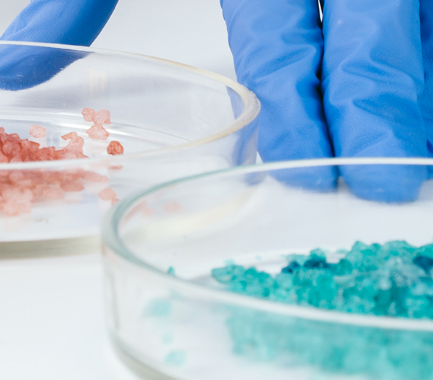Your contact
PENPET-Team - Hamburg

Tim Meister
Sales
Tel. +49 (0) 40 - 675 7 99 40
sales@penpet.de
Get in touch with us.
Isophthalic acid
Isophthalic acid is one of the aromatic dicarboxylic acids and is an important raw material for the chemical industry. To produce isophthalic acid, meta-xylene is oxidized with atmospheric oxygen using a cobalt-manganese catalyst.
Isophthalic acid is used in the production of polyesters, aramids and synthetic resins. It is used, among other things, in the production of polyethylene terephthalate (PET), oil-free alkyd resins and temperature-resistant electrical insulating paints.
We look forward to receiving your inquiry for an individual offer. Delivered as a solid in sacks and Big Bags as well as loose in silo containers or silo trucks.
CAS no. 121-91-5
EINECS no. 204-506-4
Molecular formula: C8H6O4
Synonyms: meta-phthalic acid, m-phthalic acid, 1,3-benzenedicarboxylic acid, isophthalic acid, IPA
Areas of application: Manufacture of synthetic resins, aramids and polyesters
More Information
The molecule of isophthalic acid consists of a benzene ring that has two carboxy groups. These functional groups are not directly next to each other but are arranged at a distance of one carbon atom from each other.
Because of its structure and composition, isophthalic acid belongs to the group of benzene dicarboxylic acids. It is therefore an isomer of the structurally similar phthalic acid and terephthalic acid, which differ from it only in the different arrangement of the carboxylic acid groups on the central benzene ring.
Isophthalic acid is a solid and is available in powder or crystalline form. The substance is colorless and almost odorless. Isophthalic acid can be sublimed without decomposition. The compound is very sparingly soluble in water and settles on the bottom due to its higher density. Isophthalic acid can be dissolved very well in alcohol. However, the compound is not soluble in many other organic solvents such as diethyl ether, benzene or petroleum ether.
At room temperature and under normal environmental conditions, isophthalic acid is chemically stable. The compound is combustible, but only slightly flammable and generally not explosive. However, as with other organic solids, the formation of explosive dust-air mixtures is possible due to the turbulence of fine particles. Violent and dangerous reactions can occur in contact with strong oxidizing agents.
The toxicity of isophthalic acid is estimated to be very low. The compound is considered a slight skin and eye irritant, thorough rinsing of affected areas is recommended. Inhaling high aerosol concentrations can cause reddening of the eyes, discomfort in the throat and bronchitis. When taken orally, isophthalic acid can cause acute gastrointestinal symptoms such as nausea and vomiting. Long-term effects on the kidneys and urinary tract are known from tolerance studies on animals. If the compound is accidentally swallowed, rinse the mouth thoroughly and drink water.
